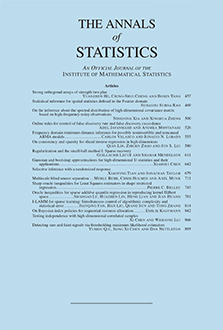Abstract
Some effort has been undertaken over the last decade to provide conditions for the control of the false discovery rate by the linear step-up procedure (LSU) for testing $n$ hypotheses when test statistics are dependent. In this paper we investigate the expected error rate (EER) and the false discovery rate (FDR) in some extreme parameter configurations when $n$ tends to infinity for test statistics being exchangeable under null hypotheses. All results are derived in terms of $p$-values. In a general setup we present a series of results concerning the interrelation of Simes’ rejection curve and the (limiting) empirical distribution function of the $p$-values. Main objects under investigation are largest (limiting) crossing points between these functions, which play a key role in deriving explicit formulas for EER and FDR. As specific examples we investigate equi-correlated normal and $t$-variables in more detail and compute the limiting EER and FDR theoretically and numerically. A surprising limit behavior occurs if these models tend to independence.
Citation
Helmut Finner. Thorsten Dickhaus. Markus Roters. "Dependency and false discovery rate: Asymptotics." Ann. Statist. 35 (4) 1432 - 1455, August 2007. https://doi.org/10.1214/009053607000000046
Information





